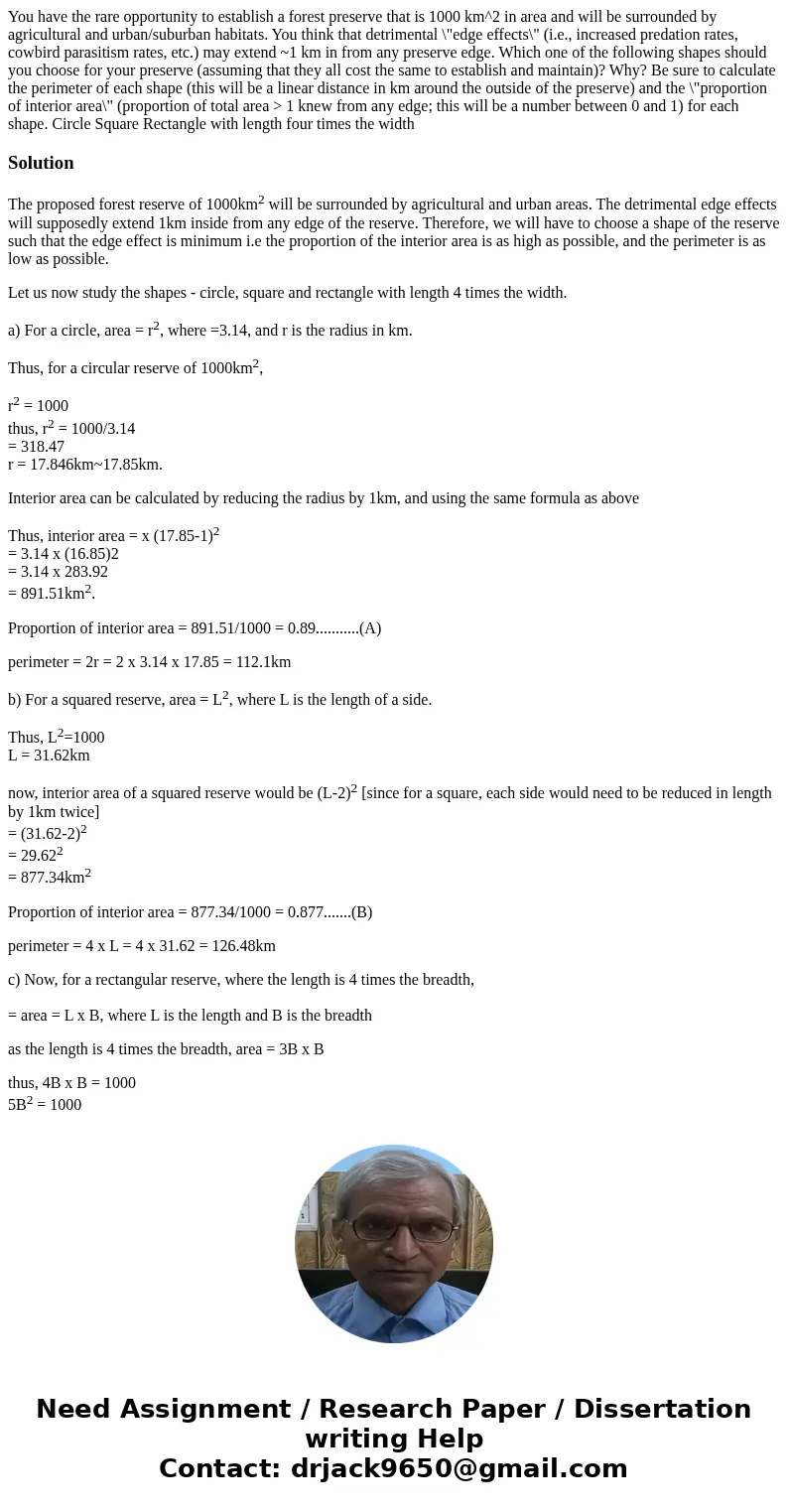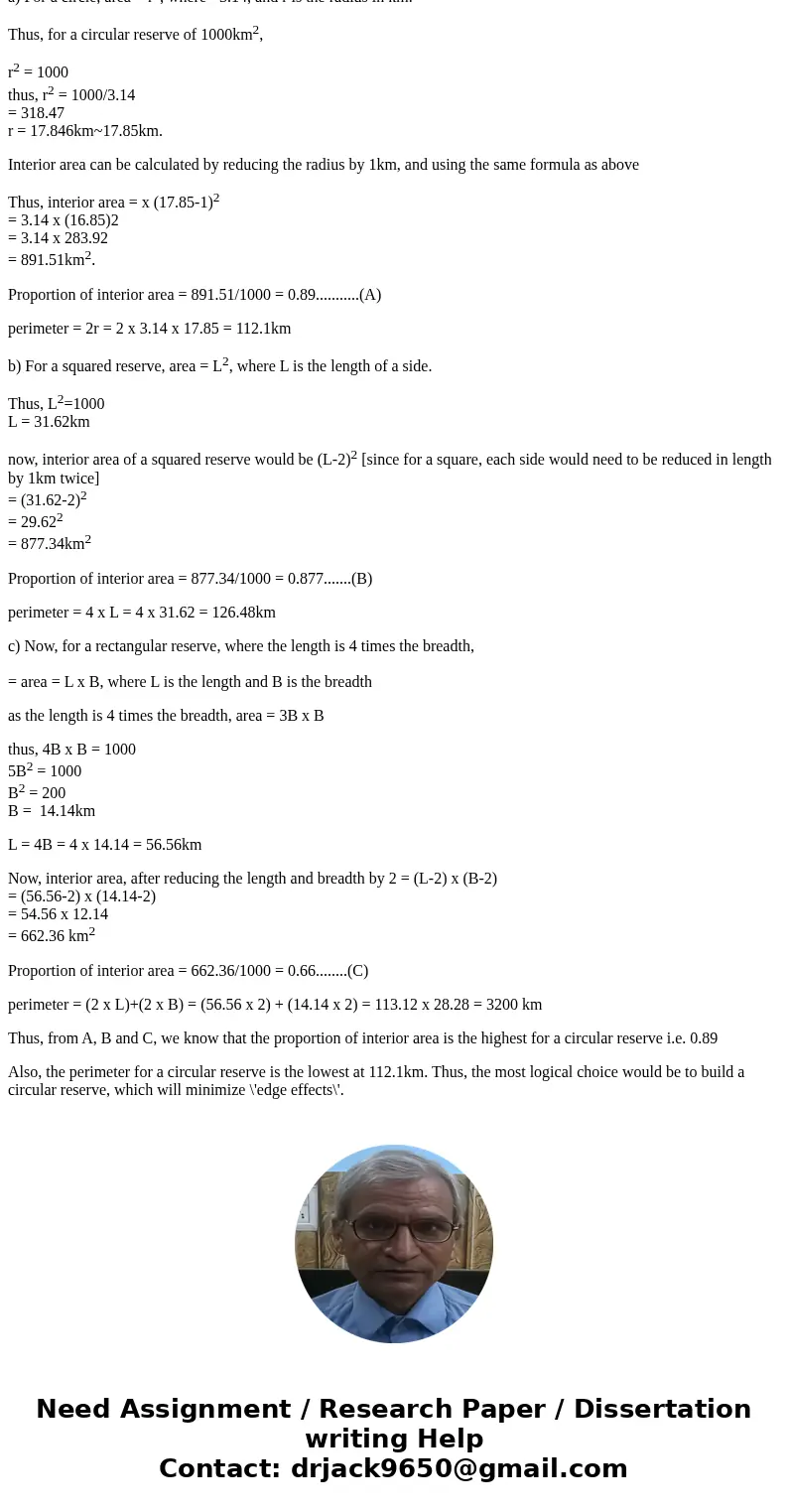You have the rare opportunity to establish a forest preserve
Solution
The proposed forest reserve of 1000km2 will be surrounded by agricultural and urban areas. The detrimental edge effects will supposedly extend 1km inside from any edge of the reserve. Therefore, we will have to choose a shape of the reserve such that the edge effect is minimum i.e the proportion of the interior area is as high as possible, and the perimeter is as low as possible.
Let us now study the shapes - circle, square and rectangle with length 4 times the width.
a) For a circle, area = r2, where =3.14, and r is the radius in km.
Thus, for a circular reserve of 1000km2,
r2 = 1000
thus, r2 = 1000/3.14
= 318.47
r = 17.846km~17.85km.
Interior area can be calculated by reducing the radius by 1km, and using the same formula as above
Thus, interior area = x (17.85-1)2
= 3.14 x (16.85)2
= 3.14 x 283.92
= 891.51km2.
Proportion of interior area = 891.51/1000 = 0.89...........(A)
perimeter = 2r = 2 x 3.14 x 17.85 = 112.1km
b) For a squared reserve, area = L2, where L is the length of a side.
Thus, L2=1000
L = 31.62km
now, interior area of a squared reserve would be (L-2)2 [since for a square, each side would need to be reduced in length by 1km twice]
= (31.62-2)2
= 29.622
= 877.34km2
Proportion of interior area = 877.34/1000 = 0.877.......(B)
perimeter = 4 x L = 4 x 31.62 = 126.48km
c) Now, for a rectangular reserve, where the length is 4 times the breadth,
= area = L x B, where L is the length and B is the breadth
as the length is 4 times the breadth, area = 3B x B
thus, 4B x B = 1000
5B2 = 1000
B2 = 200
B = 14.14km
L = 4B = 4 x 14.14 = 56.56km
Now, interior area, after reducing the length and breadth by 2 = (L-2) x (B-2)
= (56.56-2) x (14.14-2)
= 54.56 x 12.14
= 662.36 km2
Proportion of interior area = 662.36/1000 = 0.66........(C)
perimeter = (2 x L)+(2 x B) = (56.56 x 2) + (14.14 x 2) = 113.12 x 28.28 = 3200 km
Thus, from A, B and C, we know that the proportion of interior area is the highest for a circular reserve i.e. 0.89
Also, the perimeter for a circular reserve is the lowest at 112.1km. Thus, the most logical choice would be to build a circular reserve, which will minimize \'edge effects\'.


 Homework Sourse
Homework Sourse